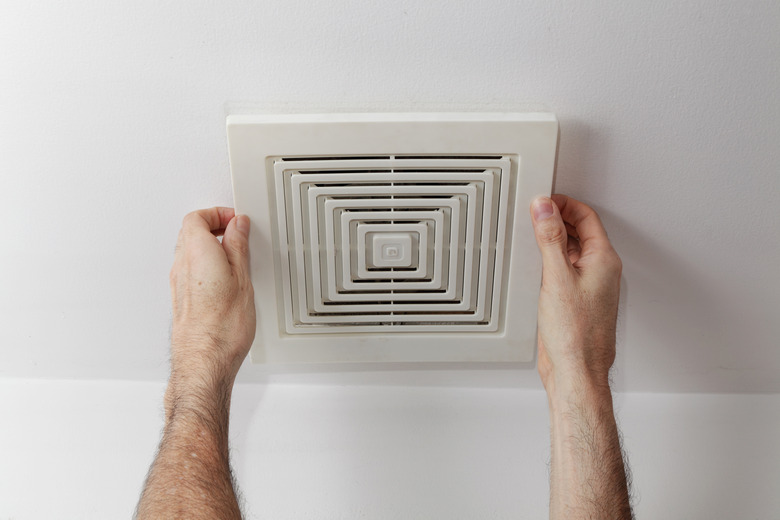How Does A Bathroom Exhaust Fan Work?
We may receive a commission on purchases made from links.
A bathroom exhaust fan works by pulling moisture out of the air before it can cause harm. If not removed promptly, the moisture from your daily shower or bath can condense on bathroom floors and make them dangerously slippery. Moisture condensing on the bathroom walls and floors day in and day out also encourages the development of mold behind the walls and beneath the floor tiles, explains an article published by building materials retailer Barton's.
Tip
A bathroom exhaust fan is designed to pull odors and airborne moisture out of your bathroom through a vent and eject them outside your home.
Proper Installation Is Key
Proper Installation Is Key
Bathroom exhaust fans are installed in a wall or the ceiling to suck warm, muggy air out of the bathroom so fresh air can enter. A properly installed bathroom fan should connect to an insulated metal duct leading directly outside to a roof vent with flashing, notes LOPCO Contracting. The duct should be as straight and as short as possible.
In many older homes, bathroom exhaust fans simply vented the humid air into the attic or the joist space above the bathroom ceiling. This practice is now prohibited under most current building codes.
Fans for Small Bathrooms
Fans for Small Bathrooms
An effective bathroom vent fan should move 1 cubic foot of air per minute for each square foot of floor area. To find the fan size you need for a small bathroom under 100 square feet, measure the length and the width of the bathroom in feet. Round up inches to the next whole foot. Then multiply the two measurements.
The result is the minimum number of cubic feet of air the fan must be able to pull out of the bathroom each minute. For instance, a bathroom that measures 9 x 8 feet would need an exhaust fan that moves at least 72 cubic feet of air per minute.
Fans for Large Bathrooms
Fans for Large Bathrooms
For bathrooms larger than 100 square feet, count 50 cubic feet per minute for each standard toilet, shower or tub in the bathroom and add them together. If there's a whirlpool bath, add another 100 square feet. This means a fully equipped, large bathroom with a toilet, shower, bathtub and whirlpool bath would need a fan that moves at least 250 cubic feet of air per minute.
Using a Bathroom Exhaust Fan
Using a Bathroom Exhaust Fan
Don't turn off the bathroom exhaust fan as you exit the bathroom after a shower. Effective removal of muggy air takes time. Allow at least 30 minutes after you leave for the fan to completely change the air in the bathroom. For convenience, you can replace the standard on-off fan switch with a timer switch that turns the fan off after half an hour.
Leaving the fan running won't be an annoyance if you install a quiet fan. Fan noise is rated in units called sones. The lower the number of sones, the quieter the fan is. A whisper-quiet bathroom fan has a noise rating of around 1.2 sones. A fan rated at 4 sones emits a low hum.
